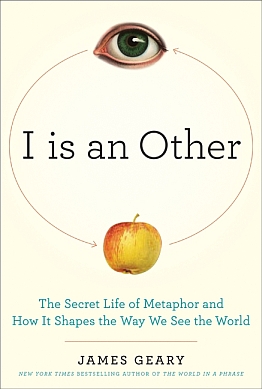- HOME
- INTRO TO THE FORUM
- USE AND MISUSE
- BADLY WRITTEN, BADLY SPOKEN
- GETTING
TO KNOW ENGLISH - PREPARING FOR ENGLISH PROFICIENCY TESTS
- GOING DEEPER INTO ENGLISH
- YOU ASKED ME THIS QUESTION
- EDUCATION AND TEACHING FORUM
- ADVICE AND DISSENT
- MY MEDIA ENGLISH WATCH
- STUDENTS' SOUNDING BOARD
- LANGUAGE HUMOR AT ITS FINEST
- THE LOUNGE
- NOTABLE WORKS BY OUR VERY OWN
- ESSAYS BY JOSE CARILLO
- Long Noun Forms Make Sentences Exasperatingly Difficult To Grasp
- Good Conversationalists Phrase Their Tag Questions With Finesse
- The Pronoun “None” Can Mean Either “Not One” Or “Not Any”
- A Rather Curious State Of Affairs In The Grammar Of “Do”-Questions
- Why I Consistently Use The Serial Comma
- Misuse Of “Lie” And “Lay” Punctures Many Writers’ Command Of English
- ABOUT JOSE CARILLO
- READINGS ABOUT LANGUAGE
- TIME OUT FROM ENGLISH GRAMMAR
- NEWS AND COMMENTARY
- BOOKSHOP
- ARCHIVES
Click here to recommend us!
READINGS IN LANGUAGE
This section features links to interesting, instructive, or thought-provoking readings about the English language. The selections could be anywhere from light and humorous to serious and scholarly, and they range widely from the reading, writing, listening, and speaking disciplines to the teaching and learning of English.
Metaphors regain philosophical appeal as mainspring of all thought
Many people regard metaphors dismissively as figurative language that’s less than truthful, an idiosyncratic play of words in which an object or idea is used in place of another to suggest a likeness or analogy between them. But in “What’s a Metaphor For?”, an essay that he wrote for the July 3, 2011 issue of The Chronicle Review, philosophy and humanities professor Carlin Romano says that metaphor “is now top dog, at least among revived rhetorical devices with philosophical appeal.”
Romano chronicles how the metaphor has engaged philosophical thought over the centuries, from Aristotle writing in his Poetics that to be a master of metaphor is “a sign of genius,” to Nietzsche declaring that tropes or metaphors “'are not something that can be added or abstracted from language at will—they are its truest nature,” onwards to a contemporary assessment by James Geary, author of I Is an Other: The Secret Life of Metaphor and How It Shapes the Way We See the World, that metaphorical thinking in fact “shapes our view of the world, and is essential to how we communicate, learn, discover and invent.”

In the late 20th century, Romano observes, “metaphor studies took off across disciplines, with philosophers, linguists, psychologists, cognitive scientists, and others...elbowing one another aside in the rush to anoint ‘metaphor’ as the concept at the crux of all thought, and maybe all human understanding.” But he says that until Geary came along with his book on metaphors, “no one has tried to explain the big picture, and particularly metaphor’s everyday impact, to a general, educated audience.”
Romano says of I Is an Other: “Think of Geary, even at his glibbest, as the bridge between the burgeoning field of metaphor studies and the man and woman in the street.” He is appreciative of Geary’s efforts to explain how new research in the social and cognitive sciences makes it increasingly plain that metaphorical thinking has a surprisingly profound if hidden impact on people’s attitudes, beliefs, and actions. “All true,” Romano says, “though Geary occasionally makes it sound as if the importance of metaphor to human language, knowledge, and comprehension is a recent discovery.”
Read Carlin Romano’s “What’s a Metaphor For?” in The Chronicle Review now!
RELATED READING:
In “Writing is bad for you,” an essay he wrote for the July 7, 2011 issue of the Guardian in the UK, Rick Gekoski says he’s skeptical about justifying the reading and study of imaginative literature. “I am pickled in the brine of literature, as an academic, critic, and writer,” Gekoski explains. “I have read pretty carefully and widely for 50 years. If there is something enhancing about such an exposure, I should be showing some signs of it by now…[But]I wonder, too, if this insistence on the improving qualities of our baptismal dips into the waters of literature does not blind us to the real thrill of reading; the recurrent reason why we come back for more, remember, quote, argue, share our experience of books?”
Read Rick Gekoski’s “Writing is bad for you” in the Guardian.co.uk now!
Click to read comments or post a comment
View the complete list of postings in this section
(requires registration to post)







